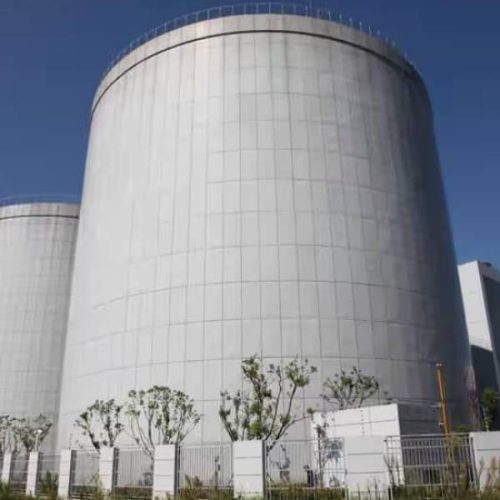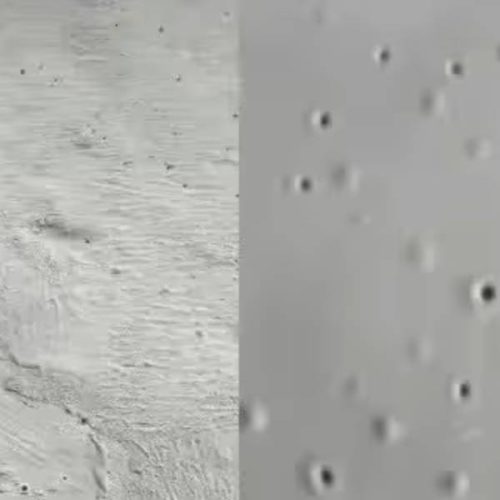What Material Is Best for Waterproofing Pools?
Firefighting water storage tanks, swimming pools, garden landscape pools, surf pools, and similar areas require long-term water retention. Poor waterproofing and leakage are not only troublesome but also costly to repair. Therefore, waterproofing requirements for pools are stringent, and selecting the right waterproof coating is essential.

The various coatings used for pools must satisfy four critical functional requirements: adhesion, resistance to cleaning agents, crack resistance, and environmental friendliness.
- The waterproof coating must exhibit high water resistance and weatherability to ensure that the waterproof layer does not peel or flake off under long-term water immersion.
- For water storage pools like swimming pools, the waterproof coating must withstand substrate shrinkage or settling, requiring high extensibility.
- The bond with the base layer must be strong to prevent peeling or blistering under high humidity or prolonged water exposure.
- The most eco-friendly choice, especially for drinking water or fish ponds, is green, non-toxic waterproofing products. First, during application, hazardous substances in confined, poorly ventilated areas can pose safety risks. Second, water quality must be safeguarded to prevent harmful residues that could affect health or harm aquatic life.
The waterproofing and anti-corrosion coating systems used in pools now include epoxy composite coatings, polyurethane coatings, and reactive polyurea coatings. How do these materials differ, and how should we choose the right one?

It’s important to understand each material’s advantages and disadvantages.
- Epoxy composite systems: These include fiberglass and epoxy resin composites, widely used for their high hardness and strength, low-cost formulation, and ease of use. However, they are relatively brittle and not very weather-resistant. Fiberglass can significantly enhance their toughness, enabling waterproof applications.
- Polyurethane coatings: Generally consist of isocyanate prepolymers (also known as low molecular weight urethane polymers) and polyether polyol resins. Polyurethane offers high strength and weatherability, with high elongation at break that other materials cannot match. Its polyol component is cheaper than epoxy resin, but it has the disadvantage of poor operability due to the necessary use of aromatic isocyanates, which are prone to bubbling and pose a higher risk for outdoor applications.
- Polyaspartic polyurea coatings: These coatings are made from polyaspartic ester resins and polyisocyanates. Often used in water parks, these materials have high strength, good weatherability, and toughness, with fast drying times but at a higher cost.
- Spray polyurea coatings: Typically made from polyetheramines and isocyanate prepolymers. These coatings dry extremely fast and have high strength, in addition to allowing a high build in a single application. However, they require professional equipment and operators, special adhesion treatment, and have higher costs.
With these properties in mind, how should we choose the right materials for application? Cost and ease of application are secondary factors in choosing the best coating system. Next, we eliminate hardness as it is not a decisive factor. What remains are adhesion, resistance to hypochlorous acid, elongation at break, tensile strength, and toughness.

Adhesion Advantage:
In pool coating systems, local detachment of coatings is common, usually due to insufficient interlayer adhesion—this might be inherent to the material application or develop over time due to substrate shrinkage, coating stress contraction, or anion permeation. Detachment is uncommon between the primer, mortar layer, and intermediate coat due to careful design consideration of adhesion, which is also easier to solve. The topcoat and sealant are typically made from the same material, differing only in color, and sometimes a sealant isn't necessary. Since their thickness doesn't exceed 0.2 mm, the adhesion issue between them is not significant.
For intermediate and topcoats, different materials have varying thermal expansion rates, so after thermal cycling, the same material system will have better adhesion than dissimilar systems. Moreover, in swimming pools, water treated with disinfectants leaves plenty of Cl¯ and OCl¯, some of which permeate through the topcoat to the intermediate layer, causing detachment. Polyurea outperforms polyurethane in preventing Cl¯ and OCl¯ permeation.
For the substrate and primer, the primer's role is to enhance adhesion and seal capillaries. If the primer fails, especially under high summer temperatures, water vapor more easily penetrates the mortar layer's cracks, exerting significant pressure and causing detachment.
Crack Resistance:
When the pool’s concrete structure cracks, the waterproofing layer must accommodate the deformation without rupture. This means the waterproofing material must be able to stretch sufficiently across the crack's width. Given that concrete cracks generally don't exceed 2 mm, an elongation at break of over 400% is usually enough to bridge such cracks.
Resistance to Hypochlorous Acid:
Hypochlorous acid is the main disinfectant in pools, and resistance to it is vital for maintaining the waterproofing layer's integrity. Polyurethane and polyurea generally have good resistance to hypochlorous acid.

Polyaspartic Polyurea Waterproof Coatings are suitable for long-term submerged environments and can be used for waterproofing applications in swimming pools, landscape pools, firefighting pools, and other areas expected to be immersed in water for extended periods. They are also appropriate for indoor waterproofing solutions in bathrooms, kitchens, balconies, as well as in other waterproof environments such as sauna shower rooms and SPAs. This product addresses the significant decline in performance of conventional water-based waterproof products on the market after prolonged water exposure. At the same time, it avoids the drawbacks of using polyurethane oil-based waterproof coatings in firefighting pools, drinking water pools, etc. Polyaspartic polyurea has now become a mainstream waterproof material worldwide.
Feiyang has been specializing in the production of raw materials for polyaspartic coatings for 30 years and can provide polyaspartic resins, hardeners and coating formulations. Some of our polyaspartic coating formulations: Polyaspartic Coating
Feel free to contact us: marketing@feiyang.com.cn
Our products list:







